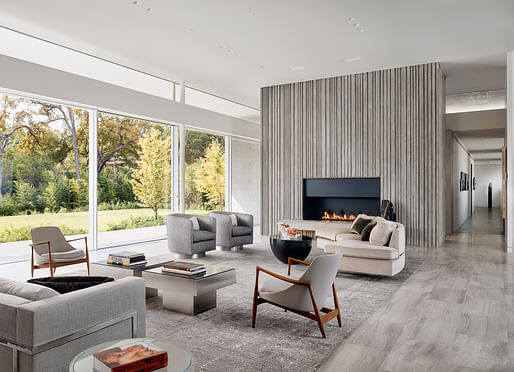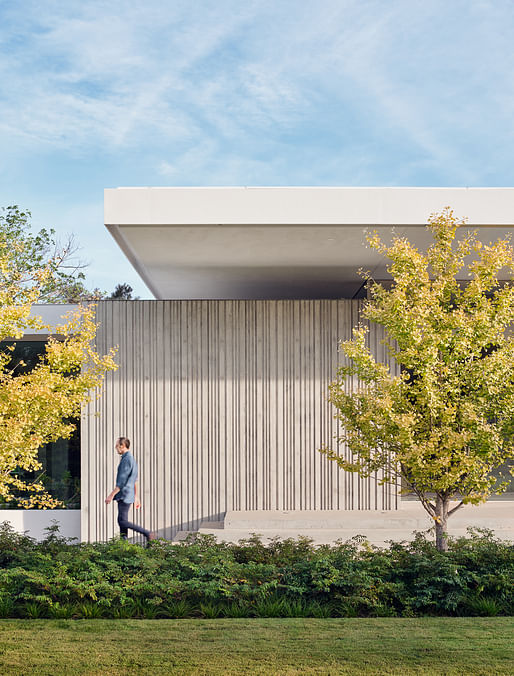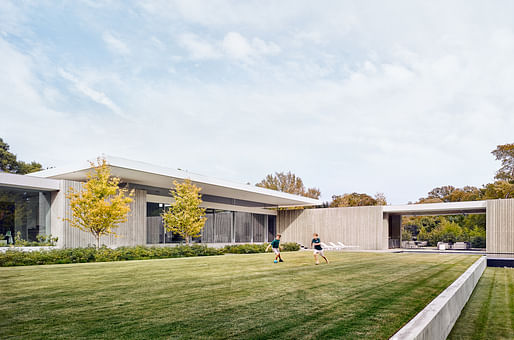
New York and Austin-based firm Specht Architects has recently completed the Preston Hollow home, an 8,000-square-foot residence influenced by the classic Dallas modern homes of the 1950's and 1960's.


Among the defining features of the home are its heavy cast-concrete walls that extend from the interior our into the surrounding landscape, creating outdoor spaces and courtyards that help frame views from inside the home. The concrete walls were cast using a custom-fabricated formwork that creates a corrugated appearance.

"This technique, a staple of Brutalist architecture from the 1960's and 1970's, creates a play on shadows and pattern that changes throughout the day," said Scott Specht, founder of Specht Architects. "Unlike the Brutalist work from that era, however, the heavy walls here are countered by delicate steel columns, thin window frames, and the hovering edges of the roof. The concrete is a grounding element that provides a contrast to the overall lightness of the spaces."


A pavilion-style roof sits lightly atop the planar structure and its large cantilevered overhangs were strategically designed to provide shade from the Dallas sun at various times throughout the day.

Moreover, an "Impluvium," an opening in the center of the roof exists that was designed after those found in traditional Roman houses. The opening allows rainwater and light to enter the space and tend to the garden below.


Moreover, water was also a core part of the overall design approach. From the entry, a narrow channel of water travels through the site to a pool. The stream is complimented throughout by a series of terraces and a subtle waterfall at the main entry.

14 Comments
Beautiful, tasteful, restful. But the sheer size of the home plus the astounding amount of glazing make one wonder about both the owner and the architect's awareness of environmental impact, especially in an extreme weather spot such as Dallas.
When taken in context with the choice of concrete, I don't think the environment was a huge factor in this design. Lovely spaces, though.
Beautiful work. It's good to see a mature Architecture practice.
There's no such thing as a semi-Brutalist home ;-)
Exactly. I was thinking quasi-Brutalist.
The opening in the roof is the atrium. The vessel that catches the rainwater is the impluvium.
In veritate dico vobis,
mies just gizzed...
gizzed, from the root word gizzard.
.
Louis Barrigan and Ricardo Legorreta can be thought of as humanist brutalists. Their use of pastel colors and water features soften the concrete quite a bit. The Texas house featured could use a little color?
Louis Barragan
Ricardo Legorreta
*Luis Barragán
(subconsciously starts humming the melody to Feliz Navidad, again, damn it!)
You are correctamundo, my bad. Have a taco and Corona for lunch! https://www.youtube.com/watch?v=ihW56Xa3XGQ
I will :)
Block this user
Are you sure you want to block this user and hide all related comments throughout the site?
Archinect
This is your first comment on Archinect. Your comment will be visible once approved.